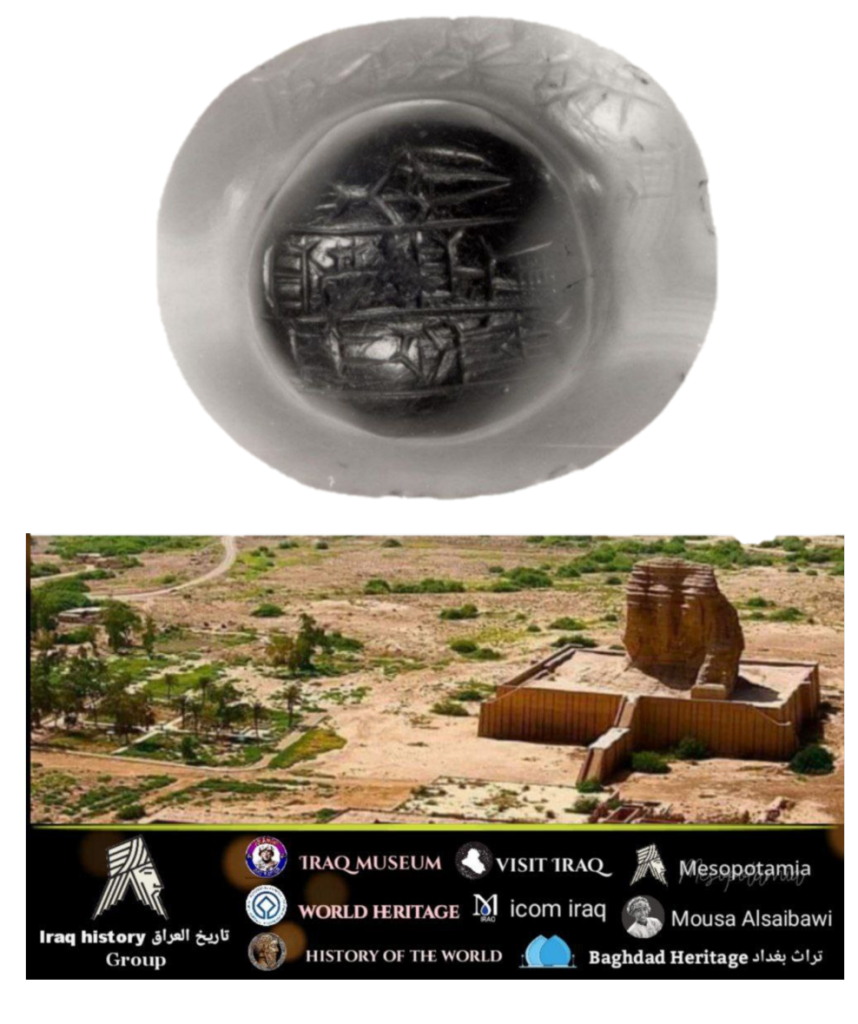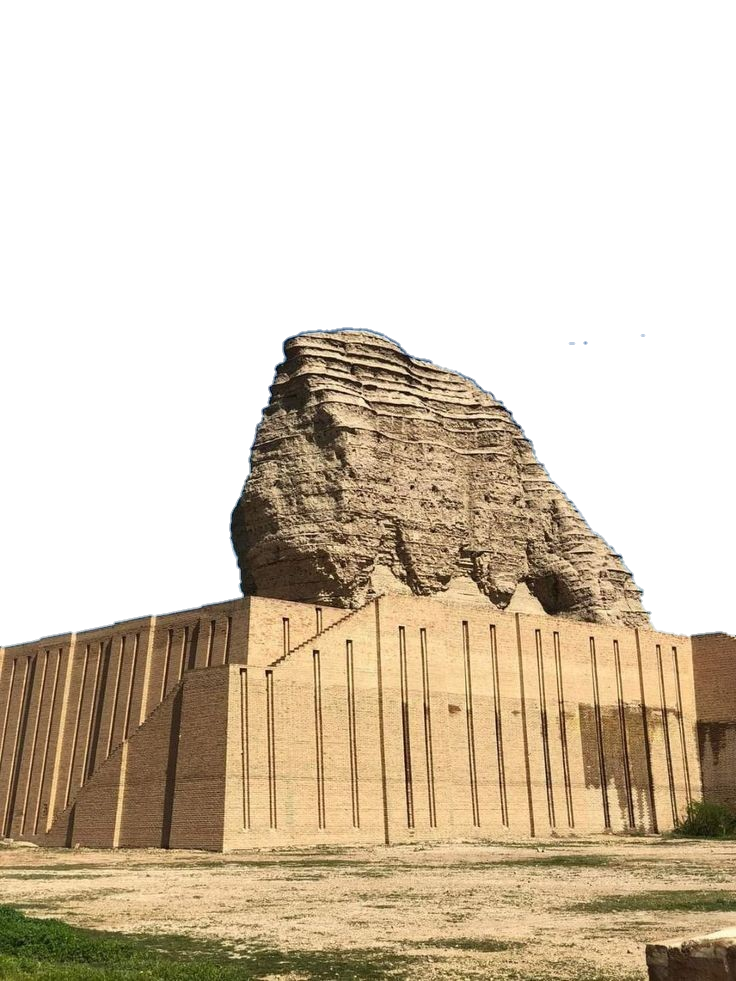THE KASSITES(c. 1680-1157 B.C.)
The Kassites, led by their king Gandash (c. 1680-1665 B.C.) descended from The north-eastern range of mountains an area known today as Luristan. The first known mention of the Kassites is during the reign of Samsu-iluna (1749-1712 B.C.) who is said to have repelled a Kassite attack, these first Kassite monarchs, though they continued attempts to occupy Iraq, were kept at bay. It was only at the time of the Kassite King Aguma(Kakrime) at about 1580 B.C. (or according to another estimate ca. 1532B.C.) that the Kassites, this time descending through Kholwan to Khanaqin, managed to sweep across the central and southern parts of Iraq and occupy Babylon. Agum If then established himself on the throne of Babylon, left vacant when the Hittites retreated after plundering the city. From then on a long Kassite Dynasty inherited the territory of the Old Babylonian Empire in Iraq. Agum II called himself King of Akkad and Babylon, and adopted a set of other titles. The King List mentions36 monarchs of thisdynasty who governed for a period of 576 years. But the Kassite rule lasted in Mesopotamia about 400 years (ca. 1580-1157 B.C.).
The Kassites were highlanders with a background and language practically unknown to us before their immigration to and settlement in Mesopotamia; there is only a short list of personal names cited in the Babylonian King List and believed by some to be Indo-European. After their settlement in Mesopotamia, the Kassites adopted the Babylonian language and Babylonian and Sumerian writing and written tradition, with which they recorded the scanty information known about their own traditions. Thereas evidence that they gradually adopted the civilization of Babylon and allowed it to pursue its own course. The Kassite kings played no part of special significance unless we take into account the temples erected by them in Babylon and in several southern cities, on whose bricks they engraved their names. In ca. 1500 B.C. King Ulam-buriashcame to the scene. He invaded and occupied the SeaLand whilst its King was busy fighting in the land of Elam. Other Kassite kings are known to have subdued a number of revolts and mutinies such as took place in the Sea-Land, and fought the northern cities which were under Hittite rule. Then a long obscure period of weak kings followed before Kara-Indash ascended the throne of Babylon.
Kara-Indash (ca. 1445-1427 B.C.), in addition to calling himself King of Babylon, adopted such titles as King of Sumer and Akkad, King of the Kassites and King of the Land of Babylon or “Kar-Duniash” as the Kassites also call it. He was a contemporary of Ashur-bel-nisheshu, King of Assyria, and during his reign Egypt’s Pharaoh TuthmosisIII reached the Euphrates (ca. 1457 B.C.).
Kara-Indash has left us a very interesting monument at Warka (Uruk), a temple which he dedicated to the Goddess Inanna, the façade of which was made of brickmould in such a way that they make up in relief the figures of a god and goddess, each carrying a bowl of water flowing down from both sides Hewes succeeded upon the throne by Kurigalzu I.

| Molded baked-brick bas-relief of the temple of Kara-indash from Uruk iraq part of the facade of the temple of Inanna Uruk There are standing male and female deities in alternate niches. Each figure holds a vessel in hands and pours life-giving water forth on to the earth |
Kurigalzu I was a contemporary of the Egyptian Pharaoh Amenophis II (1438-1412B.C.). He founded for himself a new capital which he called after his own name Dur Kurigalzu, and is now represented by the ruins of Aqar-Quf, about 25 kilometers tothe northwest of Baghdad. Later Kurigalzu II (1345-1324 B.C.) enlarged the city and its temples. Excavations

eye-stoneAgate eye-stone; inscribed on pupil.
Cultures/periods
Kassite mesopotamia Iraq
1400BC-1300BC
Excavated Babylon (Iraq)
Inscription translation: To Adad, his lord, Gimil Sin, hath presented.
Inscription note: Dedication by King Kurigalzu to the storm god Adad
Several other kings succeeded Kurigalzu I, including Kadashman-Enlil, a contemporary of Amenophis III, Pharaoh of of Egypt (ca. 1402-1364 B.C.X Burnaburiash II, whose reign was contemporaneous with Amenophis IV (Akhnaton) who reigned in Egypt ca. 1364-1347 B.C.; Kadashman-Kharbe II, a contemporary of the AssyrianKing Ashur-uballit (ca. 1365-1330 B.C.); and others. During this period, commercial and diplomatic transactions took place between Iraq and Egypt, including the exchange of precious gifts and women.
At El-Amarna in Egypt there was discovered a large group of letters concerning these transactions written in the cuneiform script and in the Babylonian language which was evidently the lingua franca of the day for diplomatic and political purposes. This collection of letters, datable to the fourteenth century B.C., i.e. to the reigns of Amenophis III and IV (Akhnaton) include documents that provide a vivid picture of international politics and the relations between the Assyrians and the Kassites. At that time rivalry existed between the Kingdom of Mitanni, the Assyrian and the Kassites over the territory in central Iraq, from the eastern range of mountains to the upper Euphrates. The conflict continued for long years and the balance of power began to tilt in Favour of the Assyrians who, despite pressure from the Aramaean nomads advancing from thewiest, managed to overthrow the kingdom of Mitanni in the northwest. The Assyrians then fought the Kassites in Babylonia, who had become weak and preoccupied in maintaining their domination over neighboring districts.
During the reign of Enlil-nadin-akhe, the last in the Kassite line of kings (ca. 1157B.C.),theKassite kingdom suffered a great blow when Shutruk-nakhunte,the Elamite ruler,ledavastarmy into southern Iraq and plundered it. Elam great collections of The invaders sacked Babylon and carried off as spoil sculptures, monuments, and temple treasures, many of which were preserved in the mounds of Susa, the Elamite capital in Iran, until brought to light again through the excavations of 1912. Among Babylon’s finest memorials found in the mounds of Susa are the famous stele of Hammurabi, the stele of Naramsin, and an important series of Kudurrus, or boundary stones, carved with symbols of the gods.
Sources :
Faraj Basmachi + Harvard University + British Museum + Iraq Museum + Louvre Museum + University of Chicago


